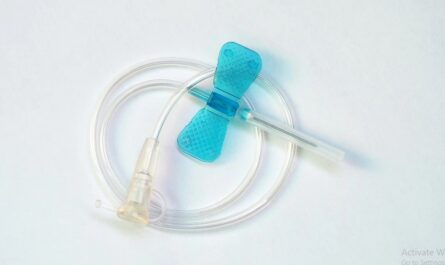
Introduction to Medical Devices
A medical device is any instrument, apparatus, tool, machine, implant, material or other similar item that is used alone or in combination to diagnose, prevent, monitor or treat disease; alleviate pain; extend life; restore function or structure of the body; assist in conception; or alter the biological process of conception. Simply put, a medical device is anything used for medical purposes from the simple thermometer to complicated magnetic resonance imaging devices. Let’s look at some key aspects of medical devices market.
Types of Medical Devices
There are many different types of medical devices that each serve a unique purpose. Some common categories and examples include:
Diagnostic Devices
Diagnostic medical devices are used to examine patients and help healthcare providers determine what treatments may be needed. Examples include medical imaging devices like X-rays, ultrasounds, CT and MRI scanners. Other diagnostic devices include endoscopes, electrocardiography machines, thermometers and blood pressure monitors.
Monitoring Devices
Medical monitoring devices allow healthcare providers to track a patient’s condition and vital signs over time. Popular monitoring devices include pulse oximeters to measure blood oxygen levels, EKG/EKG monitors to check heart rate and rhythms, glucose monitors for diabetes patients and fetal monitors during childbirth.
Prosthetics and Orthotics
Prosthetic devices are artificial limbs or devices that replace missing body parts like arms, legs, eyes and breasts. Orthotic devices support or brace weak or injured body parts like knees, ankles, wrists and backs. Examples include artificial limbs, braces, splints and various implantable prosthetics.
Surgical Equipment
As the name implies, surgical devices are tools and technologies used during medical procedures and surgeries. Examples include surgical instruments like scalpels, clamps and forceps, robotic surgical systems, endoscopes and minimally invasive tools, imaging systems used in surgery and various implants.
Dental Devices
Dental equipment and devices are used by dentists and orthodontists for diagnostic, preventative and restorative dental procedures. Common examples are dental radiography machines, scalers, drills, crowns, braces, fillings, implants and whitening kits.
Implantable Devices
Implantable medical devices are engineered systems or materials that are permanently or temporarily placed inside the body during surgery. Some examples include pacemakers, defibrillators, joint replacements, spinal implants, stents, cochlear implants and birth control devices.
The Role of Medical Devices in Healthcare
Medical devices play a pivotal role across the entire healthcare sector by enabling earlier detection, more targeted treatment approaches and better patient outcomes. Here are some key ways devices impact healthcare:
Diagnosis and Screening
Advanced diagnostic devices have made it possible to uncover health issues much earlier through various screening and testing technologies. Early detection provides opportunities for less invasive treatments and higher survival rates.
Minimally Invasive Surgeries
Robotic, endoscopic and other minimally invasive surgical tools have revolutionized many procedures by enabling same-day surgeries and hospital releases through smaller incisions. Patients experience less pain and faster recovery times.
Rehabilitative Technologies
Devices for rehabilitation, prosthetics and orthotics get patients back on their feet more quickly after injuries or medical issues by supporting weak areas and restoring functions.
Chronic Condition Management
Implantable and external monitoring devices help manage chronic conditions like diabetes and heart disease by providing healthcare data to specialists and allowing remote patient monitoring between office visits.
Aging Population Support
As populations age, medical devices are supporting quality of life for seniors through technologies like joint replacements, pacemakers, mobility aids and remote patient monitoring devices. These extend independent living.
The Future of Medical Devices
Continued technological innovation will further advance the life sciences field and patient outcomes. Some trends shaping the future of medical devices include:
Artificial Intelligence and Automation
AI applications are being integrated into medical devices for tasks like automated imaging analysis, remote monitoring systems and robotic surgical assistants with complex decision-making capabilities.
Miniaturization and Portability
Devices are becoming smaller, portable and less invasive. Examples include miniaturized lab testing kits, ingestible sensors, implantable devices and wearable technologies.
3D Printing and Customization
3D printing enables customized prosthetics, implants and surgical tools designed precisely for each patient’s individual anatomy. It expands access to tailored solutions.
Networked Technologies and Digital Health
Device data is being uploaded to digital health platforms through apps and wireless connections, empowering remote treatment, predictive analytics and automated diagnostics through big data insights.
Biological Integration
Science is progressing to interface devices more seamlessly with the human body using biological materials and tissue engineering for fully implanted systems with the body’s natural responses.
Conclusion
In summary, medical devices market have become essential tools integrated throughout healthcare systems globally. Continued innovation will further advance diagnostics, treatments and health outcomes. Combined with medical research and evolving digital technologies, the medical device field promises to transform patient care worldwide.


